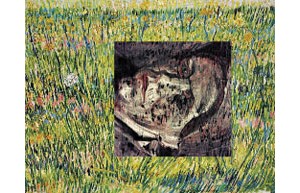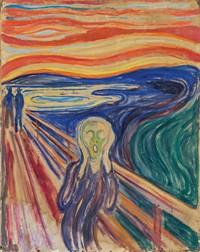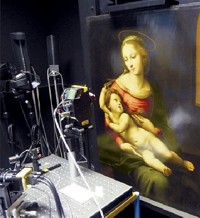Advertisement
Grab your lab coat. Let's get started
Welcome!
Welcome!
Create an account below to get 6 C&EN articles per month, receive newsletters and more - all free.
It seems this is your first time logging in online. Please enter the following information to continue.
As an ACS member you automatically get access to this site. All we need is few more details to create your reading experience.
Not you? Sign in with a different account.
Not you? Sign in with a different account.
ERROR 1
ERROR 1
ERROR 2
ERROR 2
ERROR 2
ERROR 2
ERROR 2
Password and Confirm password must match.
If you have an ACS member number, please enter it here so we can link this account to your membership. (optional)
ERROR 2
ACS values your privacy. By submitting your information, you are gaining access to C&EN and subscribing to our weekly newsletter. We use the information you provide to make your reading experience better, and we will never sell your data to third party members.
Analytical Chemistry
Van Gogh Glimpse
Powerful, focused x-ray beams reveal additional details of a master's painting
by Carmen Drahl
August 11, 2008
| A version of this story appeared in
Volume 86, Issue 32

BY COMBINING expertise in spectroscopy and art, researchers have reconstructed in unprecedented detail a color portrait of a peasant woman hidden beneath Vincent van Gogh's 1887 painting, "Patch of Grass" (Anal. Chem., DOI: 10.1021/ac800965g).
The colorful new peek at van Gogh's work was made possible by X-ray fluorescence maps that reflected distributions of specific elements in the layers of paint. Materials engineer and art historian Joris Dik from Delft University of Technology, in the Netherlands, and coworkers analyzed the painting with an intense and highly focused beam of X-rays from a synchrotron source.
Hidden details obscured beneath newer paintings can provide intimate insights into an artist's creative process, the authors write in their report. "Van Gogh would often reuse the canvas of an abandoned painting," they note. "Patch of Grass" had previously been analyzed by infrared reflectography and X-ray absorbance, nondestructive techniques for imaging hidden paint layers. Those experiments found a shadowy head under the lush green landscape but didn't reveal enough to learn more about the portrait.
The European team scanned the painting with the synchrotron X-ray beam for two days. They then computationally extracted the fluorescence signatures of the paint's elemental components and constructed maps of where they appeared on the canvas. The maps from two elements, mercury and antimony, corresponded to the head.
Knowledge about pigments in use during van Gogh's time helped the researchers digitally reconstruct the flesh tones in the painting. However, the authors note that their reconstruction misses some color components.
The element-mapping method "represents a significant advance over the current protocol for imaging buried paint layers and is a welcome new tool for museum scientists," says Jennifer Mass, senior scientist at the Winterthur Museum's Conservation Division, in Delaware.
The technique is an excellent complement to a museum's toolkit, agrees Robert J. Koestler, director of the Smithsonian Institution's Museum Conservation Institute. "It gives you interesting glimpses into the way the artist worked," he says.






Join the conversation
Contact the reporter
Submit a Letter to the Editor for publication
Engage with us on Twitter